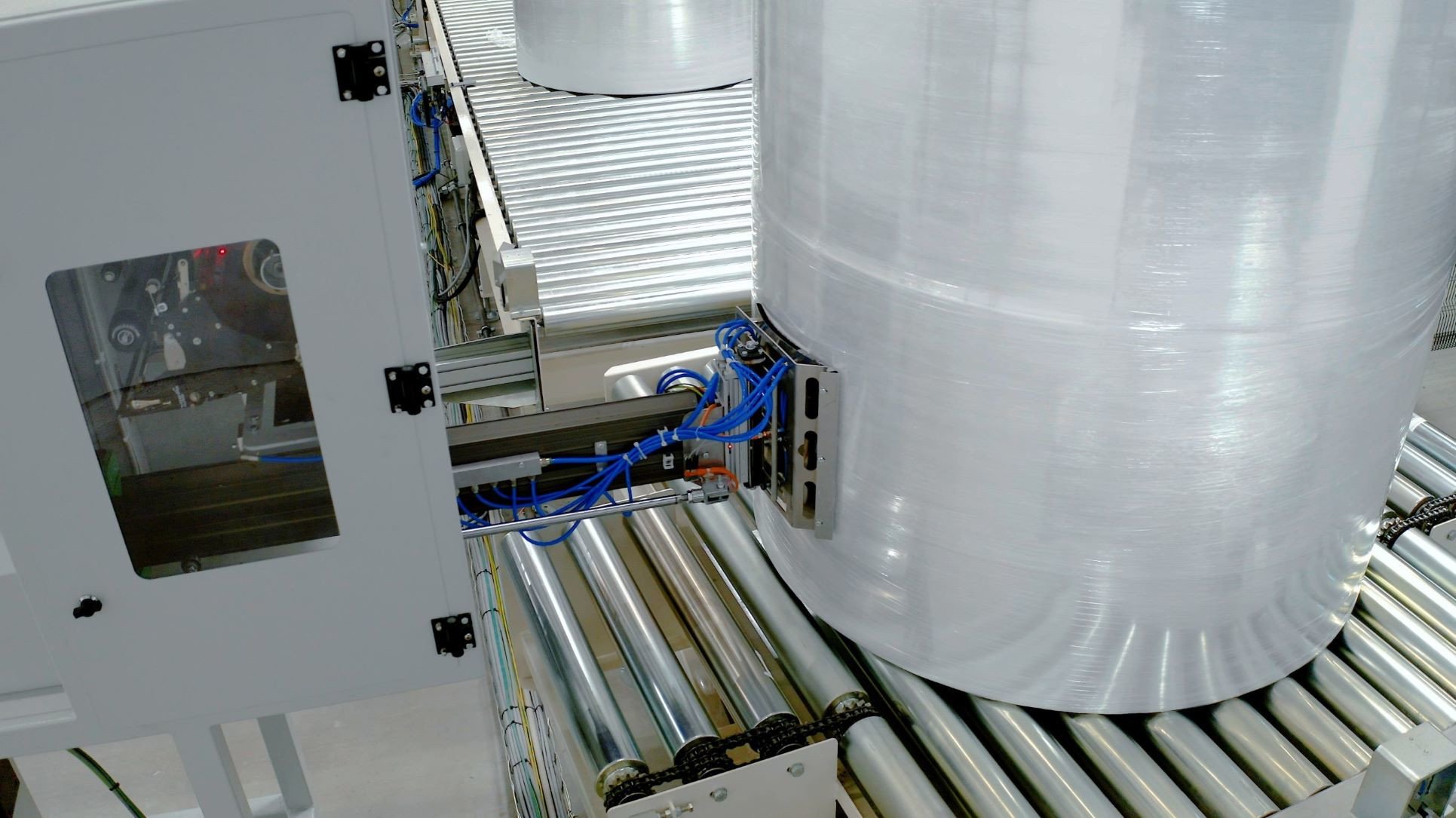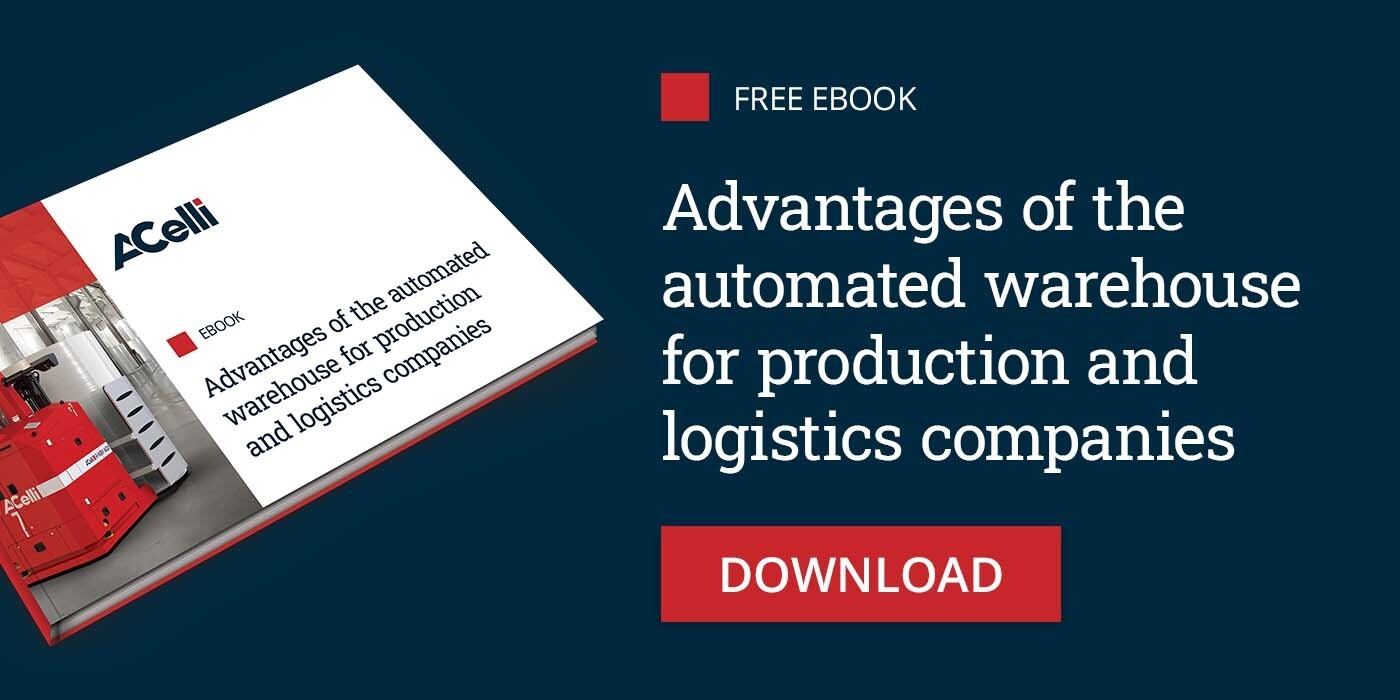Companies belonging to the paper, tissue and nonwoven industries must very often be able to handle large and heavy reels or bundles.
The main problem in this sector is not only to be able to easily move these products and store them later in the warehouse making the most of the available space, but also to avoid damage as this would imply the waste of the product. An effective solution is represented by the automatic handling of reels.
A "delicate" handling
During the production process a reel of paper, tissue or nonwoven must be handled several times.
First of all, it may be necessary to move the reel from one machine to another, both to perform all the necessary processing steps and, if one of the machines is momentarily inactive, to move the reel from one production line to another. The reel must then be taken to the packaging area, then to the warehouse and finally to the shipping area.
In all these movements, if not handled correctly, the reel can deform, be damaged or even come into contact with external contaminants, eventualities that make the reel unmarketable with all the consequent economic losses that derive from it.
Consequently, during reel handling, we have to pay the utmost attention to the safety and integrity of the product during each single movement, adopting all the necessary measures in this regard.
The essential role of the AGVs
This result cannot be obtained with absolute certainty if we entrust the handling of the reels to human personnel. In addition, the problem does not only concern the quality of the product, but also the safety of the operators: due to their size and weight, moving reels can represent a big risk.
The solution is to entrust robots to move the reels of paper, tissue and nonwoven, thus automating the process.
In our case, in particular, the use of Automatic Guided Vehicles (AGV) is provided. There are various capacities and configurations, which adapt to the various handling needs of the product and the loading unit.
It should also be noted that the handling of a jumbo roll or a soft bundle requires detailed knowledge of the manufacturing and packaging processes, which go beyond the performance offered by a multipurpose AGV.
It follows that for the paper, tissue or nonwoven industry it is necessary to resort to AGVs specifically developed to manage these types of products in their various stages of the process, from the semi-finished to the finished product ready for shipment.
Doing so will limit the concrete risk of damage to the reels during all the handling phases: during production, when they leave the end-of-line to arrive in the packaging area, during the transfer to the storage area and, finally, when the reels are transported to the loading bay to proceed with the shipment to the customer.
A fundamental element: the labels

The labels applied on the cardboard core, on the surface of the single reel and on the outside of the bundle (composed as per the packaging recipe indicated by the customer) summarize the entire history of the product.
It goes without saying that, when we talk about total traceability, the presence of the label is essential to verify that the production steps have been carried out according to the required specifications and that the final packaging obtained corresponds exactly to what was ordered and expected.
It also helps that the content of the label can be directly compared with the data present in the company ERP, thus being able to accurately verify whether the reel or bundle reflect all the customer's requests.
However, the information contained in the virtual label also goes beyond the minimum information collected by a physical label with legal value, allowing for complete traceability of the entire production process.
In fact, by eliminating the intrinsic problem of the standard label, that is the limited physical space that we can use, we can fill in an endless number of fields, reporting in detail how the checks were carried out during each production phase, if the quality has not undergone alterations and also which operator followed the production of the reel and in which phase. This, in the case of any contamination or defects, allows to establish the causes and attribute the due responsibilities.
In practice, the information contained in the virtual label is a certification of the quality of the finished product, an essential requirement for nonwoven intended for use in the medical and hygienic fields.
All this information can then be obtained by the operator or a field supervisor, by scanning the barcode on the paper label or "reading" an RFID chip inside the same label.
Some automatic packaging systems, like the ones offered by A.Celli, also allow you to check the consistency between the processes performed by the packaging line and the final result of the process in terms of package composition. This is thanks to the presence of a 3D visualization system, installed along the packaging line, capable of scanning the labels applied on the cores, on the external surface of the reels and on the bundles at the end of the process.
A further comparison between the information contained in the labels and those entered in the ERP will allow to verify the actual consistency.
The "legal" value of traceability
The direct connection with the company ERP of the system that manages the movement of the reel or bundle allows you to store and organize all the data obtained during production.
In this way, the entire history of the reel or bundle is traced, from the production of the raw material and the finished product to the shipment to the customer. This means having extremely detailed traceability, which allows you to accurately certify the quality and origin of the reel itself.
This aspect can be fundamental if disputes arise with the customer. It helps to manage any complaints with professionalism, certainty of the data and speed in the response and in the production of arguments to support our case.
The detailed traceability in fact allows you to accurately establish, for example, what the state of the reel was when it was in the dispatching area, at what time it was loaded on the means of transport and when it left the production plant.

